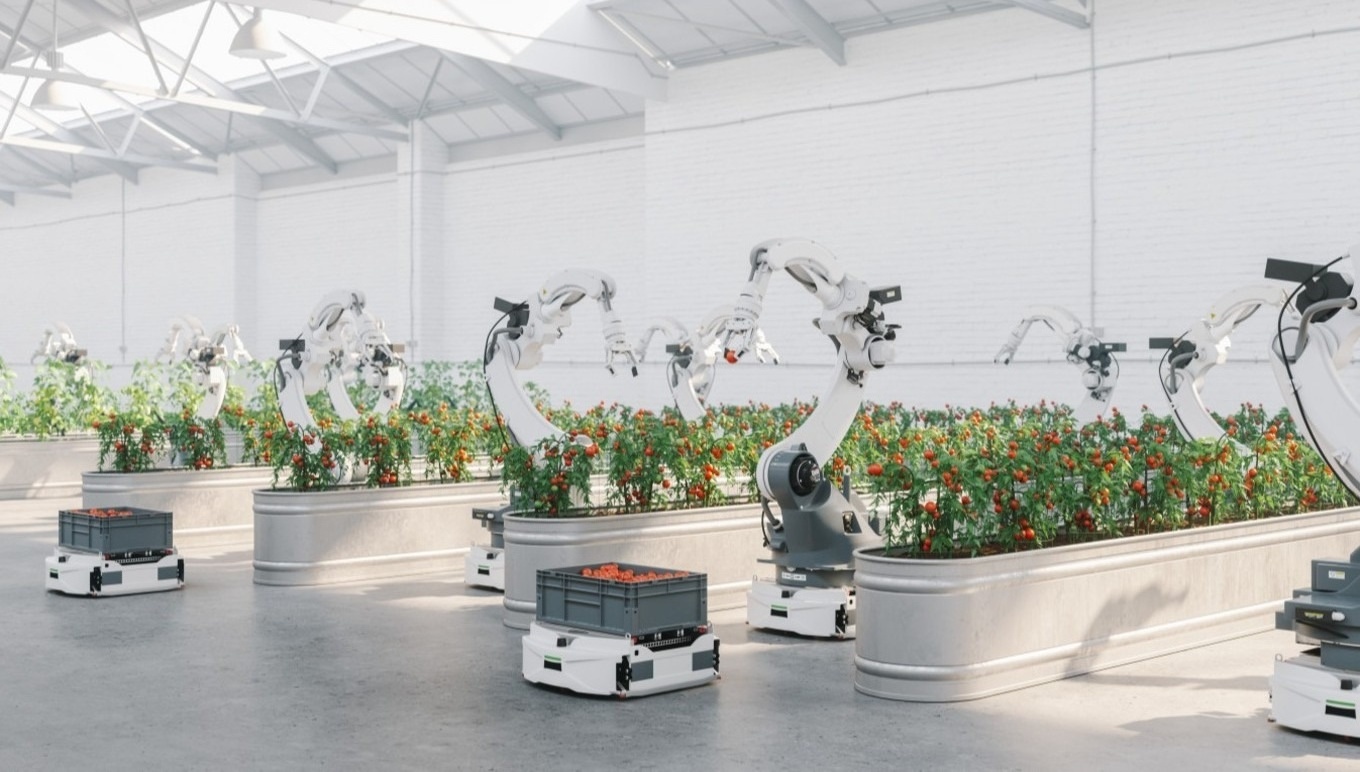4 Emergent Technology Trends in Agriculture to Define the Future of Farming
4 Emergent Technology Trends in Agriculture to Define the Future of Farming
4 Emergent Technology Trends in Agriculture to Define the Future of Farming
Feb 15, 2022
 John McCurdy | Senior Content Writer, Marketing
John McCurdy | Senior Content Writer, Marketing
Agriculture has come a long way from its humble beginnings more than 10,000 years ago. While our ancestors developed rudimentary practices for the basic cultivation of edible plants, today our farming operations involve the careful application of various scientific principles and some of the most exciting technological developments on the market.
The positive effects of these advancements are varied, ranging from greater yields and bigger crops to reduced waste and smaller carbon footprints. Food and beverage businesses with an eye toward the future are already investing in cutting-edge agriculture tools to get the edge on the competition, and there’s a good chance your company could stand to benefit from doing the same.
In this post, we give you the low-down on four of the most promising emergent technologies in farming. Tomorrow’s agriculture is already here today—read on to learn about the new gadgets and systems that are driving progress and unlocking better results for organizations like yours.
1. Aerial Imaging
Farmers are increasingly taking to the sky to keep tabs on their crops. While no one’s actually leaving the ground, drones and satellites that monitor fields and gather data on everything from biomass and plant height to the presence of weeds and level of water saturation are soaring in popularity.
What’s more, aerial imaging devices can use geographic information system (GIS) technology to analyze the efficacy of irrigation plans and their effects on land degradation, erosion and drainage. And visuals so sharp as to allow for the assessment of an individual plant’s foliage are not only entirely possible—they’re actively being used to detect pests and diseases so that crops can be saved from environmental threats.
As for the differences between the use cases for drones and satellites, both can accomplish most of the critical functions of aerial imaging technology, but each have their pros and cons. Drones can typically capture and relay information faster, but they can be prohibitively expensive and can’t cover large parcels of land at a time. Satellites can conduct spectral imagery to analyze chlorophyll and nitrogen content, but access and availability are sometimes limited due to outages and cloud cover.
2. Automated Machinery and Robotics
The mental image of a farmer riding a tractor across their fields comes readily to mind, but the fact of the matter is that the presence of a human is no longer necessary. Self-driving tractors are now a reality, as are smaller robotic vehicles that can zip between rows of crops and quickly analyze conditions and relay information back to a central database.
Agriculture machinery leader John Deere recently announced its new 8R autonomous tractor, and this pioneering technology is ready for wide-scale production and due to become available for farmers to purchase later in 2022. Meanwhile, companies like Harvest Automation and Nexus Robotics have developed robots for picking delicate produce and removing weeds, respectively.
There are plenty of other applications for automated machinery, including planting, watering and applying fertilizers and pesticides. Like drones, many of these devices remain expensive to acquire and maintain, but a future in which farming operations can dispatch their robotic fleet to tend their plants may not be that far off.
3. Internet-of-Things Soil Sensors
Achieving greater connectivity in agriculture has the potential to have a dramatic impact, with McKinsey & Company predicting that a more connected infrastructure could result in a $500 billion increase in global gross domestic product. Internet-of-Things (IoT) devices are a key component of that vision, and some of the most valuable products in that category include soil sensors.
Because the composition of soil has such a huge impact on the quality of the fruits and vegetables produced, getting chemical balances and moisture content just right is crucial for optimizing results. Equipment on the market today from manufacturers like Monnit and Sensorex can accurately measure key variables and inform any necessary interventions.
Beyond their function of monitoring conditions to keep plants healthier, IoT sensors have the additional benefit of reducing the burden on employees to conduct physical work out in the field. Readings are automatically and instantaneously transmitted to whichever central system the business has implemented, which represents a much more efficient method as opposed to manual means.
4. Hydroponics and Vertical Farming
As we covered in a previous post, the advantages of hydroponic agriculture are many, with better yields, reduced water consumption and even better taste and texture of end products among them. When combined with vertical farming, the possibilities are promising—reliable sources of fresh, wholesome produce in even crowded urban centers are already in operation thanks to brands like Bowery Farms and Plenty.
Plants grown with hydroponic methods don’t need extensive root systems, allowing them to devote more energy to the production of leaves and fruit. They also reach maturity faster and are safe from pests and diseases due to their indoor cultivation.
And with regards to sustainability, the smaller footprint of vertical farms allows them to be placed closer to or even within areas of high population density, which reduces the need for transport and the harmful emissions associated with it. These facilities can also have a year-round growing cycle, which makes them more efficient and capable of delivering items that would otherwise be out of season regardless of the local climate.
Laying the Groundwork with the Right Solution
Whether your organization is ready to deploy some of these new technologies or simply interested in working with supply chain partners that already have, you’ll need the right digital foundation to do so. For that, there’s nothing better than an industry-specific enterprise resource planning (ERP) solution from a provider that knows the food and beverage marketplace inside and out.
Here at Aptean, we leveraged decades of collective expertise and a deep understanding of best practices to create our specialized food ERP. The system boasts a full suite of robust features, including several specifically for fresh produce companies like consignment tracking and a grower portal.
Also, relevant to introducing new technology in your operations, we started with a Microsoft Dynamics 365 framework. This ensures that our product can be updated seamlessly and is always on the cutting edge as far as integration with new devices and complementary systems. Plus, it’s backed by our dedicated IT teams and redundant servers, giving you a reliable, cross-functional platform for data management and execution of critical processes.
Ready to learn more about Aptean Food & Beverage ERP and how it facilitates working with the latest in agricultural technology? Contact us today.
Start Transforming Your Fresh Produce Operation
If you’re ready to take your business to the next level, we’d love to help.



